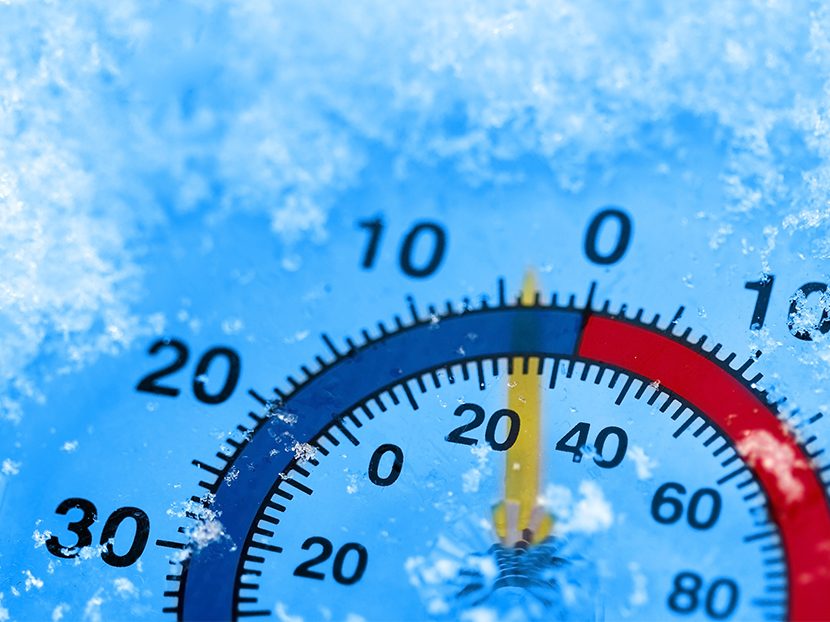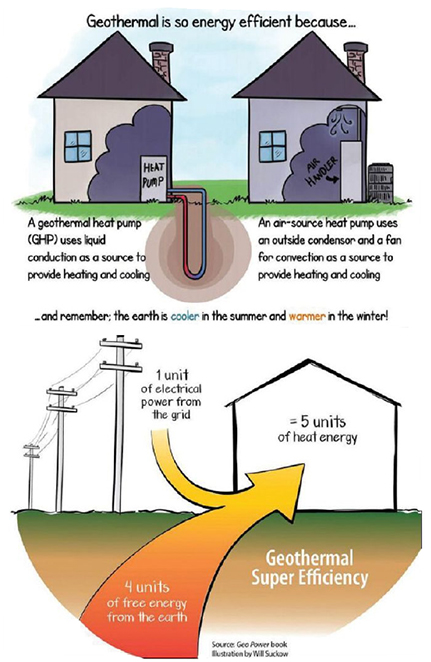Heating Season Preview: Looking Ahead
Here are some of the current strides in hydronic, radiant, geothermal and alternative technology.

Sometimes it is good to take a step back from our day-to-day activities and take a look at the way technology is advancing in our industry. Our industry has truly accomplished an amazing feat in keeping people comfortable. So much so that people take their comfort systems for granted and don’t really appreciate what they have, unless they have to do without for a day or two. They have come to expect their homes to be the exact temperature they desire. They also keep pushing to have individual temperature control in every room of their home. 
Indeed, today’s consumers are far removed from those of 100 years ago. Back then, most people were responsible for their own comfort. A central heating system was a luxury that most could not afford. They always made time during the hot summer months to go out and cut wood for the upcoming winter. They had to make sure they had a big enough stockpile of seasoned wood to last the whole winter. They would heat their homes with one or two wood or coal stoves. They became experts at controlling the draft and properly banking the fire for the longest burn times and the proper amount of heat. When they got too warm, they would find a chair farther away from the stove, or crack a window. If they came in, chilled from the outdoors, they would usually park themselves right beside the stove to warm up. Their boots and shoes could also be found close to the stove, because putting on a warm pair of boots is a pleasure. In some ways, they had things better than we do today. In other ways, not so much.
Hydronics
 The hydronic market has been slow and steady for the last few years. Bob “Hot Rod” Rohr mentions that manufacturers are staying the course and introducing a few products a year to stay current and relevant.
The hydronic market has been slow and steady for the last few years. Bob “Hot Rod” Rohr mentions that manufacturers are staying the course and introducing a few products a year to stay current and relevant.
He also notices a consumer industry that is expressing more interest in condensing gas combi boilers. Many American manufacturers, such as Lochinvar, also seem to be responding with price point combi boilers to compete against some of the offshore brands. Combi boilers have provided a more budget-friendly solution for many homeowners and minimized the space required for central heating and hot water production.
Not a lot has changed in boiler heat exchanger technology. More has been done recently with the gas train assembly, to allow higher turn down firing ratios. This is also an effort to make combi boilers a more viable equipment choice. They have historically been an ill fit for many residential hydronic systems.
Dan Foley (Foley Mechanical) says water quality and ECM pump technology are two hot topics in the hydronic industry; the two really go hand in hand. ECM pumps are not generally expected to have a long lifespan if the water quality in the system is poor and allows iron corrosion to take place. The pumps have very powerful internal magnets, which attract waterborne iron particles and can lead to pump failure.
Boiler manufacturers have also been pushing water quality. The heat exchangers (HX) in the new high efficiency boilers are not nearly as tolerant as the old cast iron boilers were. One of the major causes of HX failures in new boilers is due to poor water quality control in the system. A few manufacturers such as Caleffi and Axiom have brought innovative new products to the market to address water quality issues.
Radiant
 When it comes to new water-based comfort system installs, I see more and more interest in radiant as opposed to baseboard or radiators. Radiant heating has really been catching on in the agricultural and light commercial areas. Most new shops and barns that get built here in South Central Pennsylvania will use a radiant slab as their heat source. The general public as well as contractors are also becoming aware of the need for proper insulation under the slabs. Whether this awareness has been brought on by increased training or failed systems, I’m not sure. Maybe a bit of both? Manufacturers keep bringing out innovative new products to make radiant installs faster and simpler. Some examples are REHAU’s RAUPEX SPEED, Viega Rapid Grid and PEX-Pal by Axiom.
When it comes to new water-based comfort system installs, I see more and more interest in radiant as opposed to baseboard or radiators. Radiant heating has really been catching on in the agricultural and light commercial areas. Most new shops and barns that get built here in South Central Pennsylvania will use a radiant slab as their heat source. The general public as well as contractors are also becoming aware of the need for proper insulation under the slabs. Whether this awareness has been brought on by increased training or failed systems, I’m not sure. Maybe a bit of both? Manufacturers keep bringing out innovative new products to make radiant installs faster and simpler. Some examples are REHAU’s RAUPEX SPEED, Viega Rapid Grid and PEX-Pal by Axiom.
Radiant cooling is also gaining some traction in the marketplace. At this point, it is mostly done in commercial and high-end residential applications. As an industry, we still lack a lot of training and educational materials that will be necessary to create a greater radiant cooling market in residential homes. Part of the training that will be necessary for radiant contractors is psychrometric calculations and engineering. Right now, most people have a misplaced fear of condensation forming on the floors and pipes in a radiant cooling application.
Understanding psychrometrics and how to design systems that create the proper indoor air conditions will help people realize that radiant cooling can be an effective comfort system in most inhabited climates around the globe. Much like radiant heating systems, radiant cooling systems offer superior comfort and a healthier indoor environment. This is the primary reason they are sought after.
Some manufacturers, such as Tekmar, have recently brought out systems controls that incorporate radiant cooling and make the install less formidable for the contractor.
Geothermal
When it comes to geothermal, everyone is asking the question: What happens now that the tax credit is gone? That seems to be the foremost things on people’s minds. There are many who think the industry won’t be able to stand on its own feet without the subsidy that was being provided by the federal government. Others believe that the industry should be able to stand alone, but it will dramatically slow in growth.
I spoke to Creative Energy Solutions in Lancaster, Pennsylvania. They are the largest Geo distributor in the local area. I asked them for their thoughts on the expired tax credit.
The general consensus was that they have to learn how to sell again. They said, “While the tax credit was in effect, it was easy. Geo systems literally sold themselves. Now that it’s gone, sales are down a bit, but we expect to remain profitable. We have been selling geothermal systems before there was a tax credit, and we will continue. We do expect to gain back some business from the contractors that were buying geothermal equipment from HVAC/plumbing wholesalers, as we see them dropping their geothermal lines from distribution.
 Jay Egg, from “EggGeo,” offers some good advice for contractors that are selling and installing Geothermal systems:
Jay Egg, from “EggGeo,” offers some good advice for contractors that are selling and installing Geothermal systems:
• Offer geothermal first. Let the homeowner know that this is the best system you can offer. Emphasize the flexibility of a Geo system. It is compatible with many different distribution systems, both hydronic and forced air.
• Make the longevity of Geo systems a selling point. A geothermal unit that is properly installed and maintained is expected to have a lifespan of 25–30 years, as compared to air source heat pump systems that normally only get 12-17 years of service. Also, the loop field of a Geo system is expected to last 100 years or more. Many people only look at payback of one system’s efficiency as compared to another, while leaving out longevity and replacement costs. The longevity alone makes geothermal a viable competitor even in the absence of the tax credit.
• Another selling point of geothermal is aesthetics. Unlike air source heat pumps, geothermal source heat pumps have all the equipment hidden inside of the building. This not only enhances the curb appeal of the home, but it also cuts down on the noise pollution, allowing homeowners to more thoroughly enjoy outside activities. What’s worse than having a barbecue on the back patio when suddenly that noisy condenser unit from your air source heat pump kicks in? Very disruptive.
• And don’t forget to let the homeowner know about the efficiency levels that geothermal is able to attain. If you take a look at some of the new equipment, they are getting some extraordinarily high COP and EER numbers. Geo units are also more likely to maintain these efficiency levels throughout their lifespan, due to their environment. The refrigeration piping and installation is all done in a factory environment, as opposed to field installed piping and refrigerant charging. The heat rejection/absorption is many times in a sealed loop field as opposed to an outside condenser that is exposed to sun, rain and dust.
Jay Egg also mentioned that geothermal continues to grow in commercial and institutional applications. These systems not only provide all of the previously mentioned benefits, but they also remove serious health and security risks by eliminating cooling towers in these buildings. We have been seeing ever more news articles about people contracting Legionnaires’ disease from cooling towers. Geo eliminates this risk. Cooling towers also pose a risk for critical function buildings, where the cooling tower is exposed, and if tampered with, could render an entire building without air conditioning and force it to be evacuated.
Alternative energy
Max Rohr, who keeps a close eye on the alternative energy market, says he is seeing steady improvements in technology related to systems driven by renewable energy. He says that recently most of the recent developments are finance-related. Companies have started offering third-party financing, along with leasing arrangements and some community expense shared projects.
Bob Hot Rod Rohr, Caleffi, provides some insight on solar thermal. Solar thermal, even in the sunbelt areas, is pretty soft, low energy cost, and rebate programs are drying up. The little solar thermal we do is commercial, like brew pubs, prisons, large, consistent DHW users. We are bidding more and more solar thermal to the islands where energy costs are quite high due to diesel powered electricity. Resort properties are the biggest opportunity with high DHW loads.
It also appears there is still interest in biomass/wood boilers, but people are a little slower on pulling the trigger, due to the low fossil fuel prices.
Connectivity
Connectivity may be one of the fastest growing areas of our industry. It is coming whether or not we are ready for it. If we, as an industry, don’t fill the slots, one of the Silicon Valley tech giants will. I think we will all have to buckle up for this ride.
What I’m speaking of is the concept of smart homes. A home that responds to your voice commands and is designed to make life easier and more convenient for the occupant. These smart home systems command an ever-increasing number of functions of a home’s mechanical systems. Soon enough, they will engulf the entire home. It seems like up till now, most of the activity has been based around electrical systems, lights, blinds, receptacles and so forth. But in the last few years, thermostats have become front and center. This brings the HVAC/heating contractor into the fray.
To understand what it is that we must bring to the table, we have to first understand how these systems are being controlled and where that control is headed. Historically, a smart house has been controlled by a single controller with proprietary hardware and software. These have been more expensive systems and not as flexible. You were not able to control one of your home’s functions unless the manufacturer of your control system made a controller specifically for the function. It was also much more difficult to program a controller to carry out events in the order that you wanted and not easy for the homeowners to change the program on a whim.
Now the control platform is starting to move to a cloud-based command center. This is a platform where the online software communicates with the home’s controllers through Wi-Fi. The homeowners can use the cloud platform to create commands in a simplified user interface. These commands, control the systems and functions within your home. Manufacturers are making controllers that are individualized to their particular equipment or intended control functions, and are able to communicate to the cloud-based command center.
One such command center is called If This Than That (IFTTT). Here’s how it works. You have all your home’s devices connected and visible in the command center. Then you go in and say, if this device is doing this, then that device should do that. It’s scary simple. There are more companies joining as well. Domino’s has been one of the latest.
Let’s do a scenario for illustration.
You come home from work with your smartphone in your pocket. As soon as you get within the preset range of your geofencing thermostat, your home’s comfort system switches on and goes to your desired set point. The lights in the driveway turn on and the sprinklers in the yard turn off. As you pull up the drive and hit your garage door opener, the garage lights also come on. The door to the house unlocks and lights come on to light a pathway into the house.
You decide you want to have your roommates or friends over for a pizza dinner. You call it in to Domino’s. As soon as your food hits the oven, everyone gets a notification. You can have your lights change hue or your TV switch on to your favorite channel. Once it’s out for delivery, your porch light turns on, and the sprinklers turn back off.
Fun stuff, right?
So now the master control has moved to the cloud, and the home is customized through individual Wi-Fi controls from many different manufacturers.
You may ask: Why is this important for me to know as a heating contractor?
Like I said before, thermostats and comfort systems have come into the spotlight of the tech industry. Now you need to be able to offer a product that allows your comfort system to be controlled via these cloud command centers. There are currently no less than 500 different companies all angling for the cloud control business. At the end of the day, there will be a handful of winners, and the rest will just disappear.
There are a few manufacturers, Honeywell being one of them, that are making their thermostats and products compatible with all online platforms. This way they will be onboard with whoever ends up winning the cloud control market.
As a heating contractor, it is good to know these things and be able to offer the consumer products that are not only connected now, but will still be compatible in the future.





